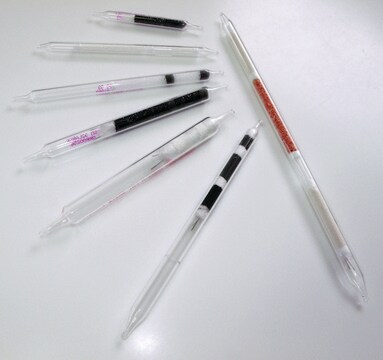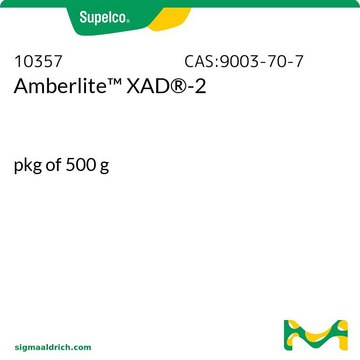20254-U
ORBO™ 101 Carbotrap® B (20/40), 100/50 mg
W,W,W separators, O.D. × L 6 mm × 70 mm, pkg of 25 ea
Sinónimos:
ORBO™ Carbotrap® Tube
About This Item
Productos recomendados
Materiales
W,W,W separators
Nivel de calidad
Línea del producto
ORBO™
composición
Bed A, 100 mg
Bed B, 50 mg
envase
pkg of 25 ea
fabricante / nombre comercial
ORBO™ 101
técnicas
active air sampling: suitable
D.E. × L
6 mm × 70 mm
Matriz
Carbotrap® B Graphitized Carbon Black (GCB) (20/40)
tamaño de partícula
20-40 mesh
aplicaciones
air monitoring
environmental
industrial hygiene
¿Está buscando productos similares? Visita Guía de comparación de productos
Categorías relacionadas
Descripción general
Información legal
Código de clase de almacenamiento
11 - Combustible Solids
Clase de riesgo para el agua (WGK)
nwg
Punto de inflamabilidad (°F)
Not applicable
Punto de inflamabilidad (°C)
Not applicable
Elija entre una de las versiones más recientes:
Certificados de análisis (COA)
It looks like we've run into a problem, but you can still download Certificates of Analysis from our Documentos section.
Si necesita más asistencia, póngase en contacto con Atención al cliente
¿Ya tiene este producto?
Encuentre la documentación para los productos que ha comprado recientemente en la Biblioteca de documentos.
Nuestro equipo de científicos tiene experiencia en todas las áreas de investigación: Ciencias de la vida, Ciencia de los materiales, Síntesis química, Cromatografía, Analítica y muchas otras.
Póngase en contacto con el Servicio técnico





